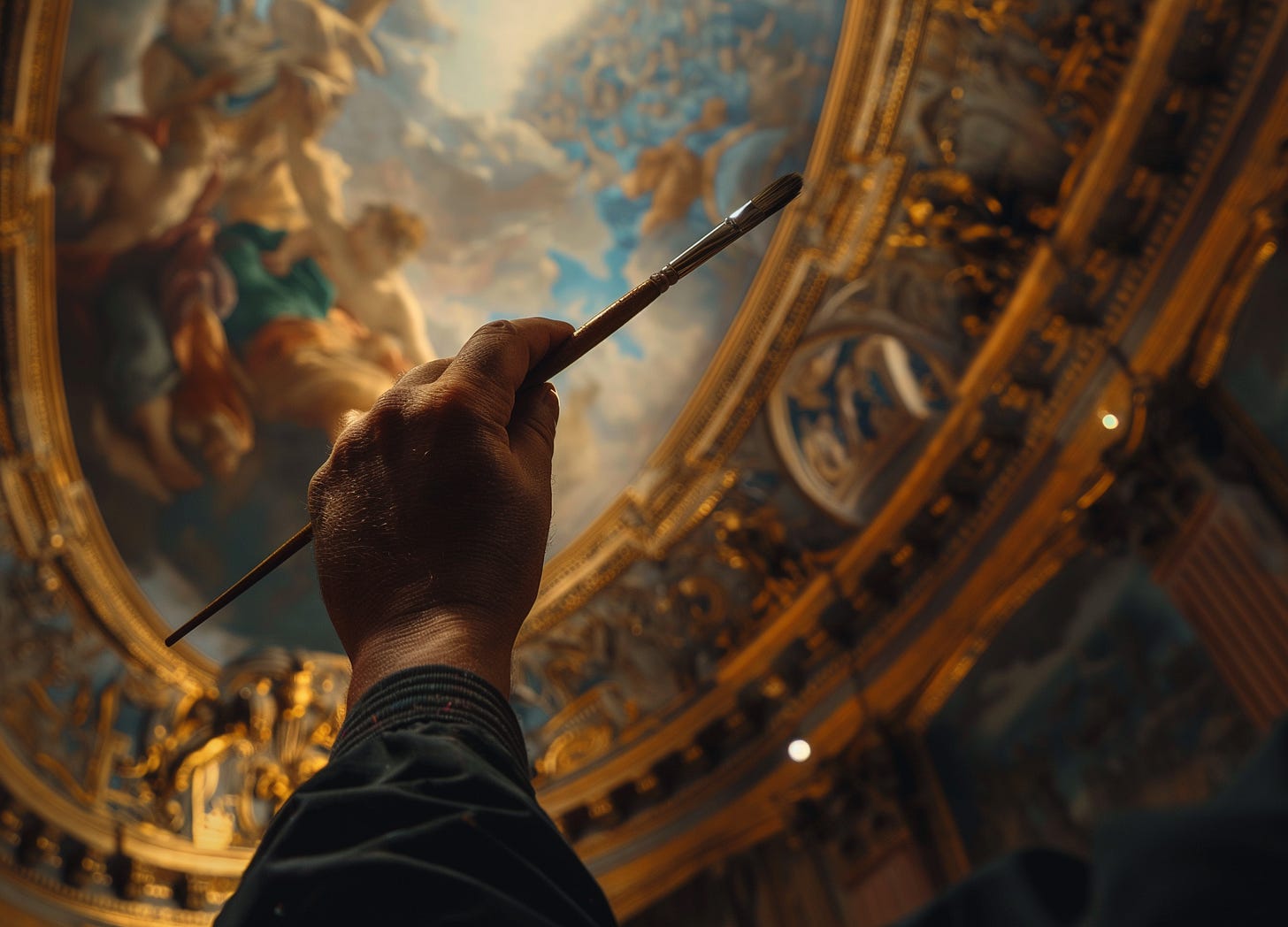The evolution of painting estimation techniques
Reading time: 4 minutes
Pricing your work can feel daunting as an artist.
How do you put a number on something so personal?
The history of painting estimations is a fascinating journey from subjective opinions to data-driven methods. Let's explore how these techniques have evolved.
The early days: Subjective valuations
Previously, painting prices were determined by personal taste, artist reputation, and historical significance. Art dealers, collectors, and critics used their expertise to estimate a painting's worth based on these factors. This approach was subjective and could vary greatly depending on who was estimating.
For example, artists like Michelangelo and Leonardo da Vinci were highly valued during the Renaissance due to their exceptional talent and connections with influential patrons. Wealthy families or the Church often commissioned their works, enhancing their reputation and price. This system worked well for established artists but left emerging painters struggling to find their footing in the market.
Moreover, the materials used in creating a painting also played a role in determining its value. For instance, using gold leaf or rare pigments could significantly increase a piece's perceived worth. This emphasis on materials highlights how early valuation methods were heavily influenced by tangible factors rather than artistic merit alone.
The rise of art market institutions
Institutions like auction houses became crucial in setting prices as the art market grew. Auctions provided a platform for selling paintings to the highest bidder, clearly indicating their market value. However, this method still relied heavily on the artist's reputation and the demand at the time of the auction.
Auction houses like Christie's and Sotheby's have been instrumental in establishing benchmarks for art prices. Their sales data helps analysts understand market trends and predict future values. These institutions have also created a sense of prestige around certain artists or styles, which can drive up prices based on perceived value rather than artistic quality.
The rise of auction houses marked a significant shift towards more formalized pricing mechanisms. However, this system still favoured well-known artists and often excluded emerging talents. The lack of transparency in auction processes meant pricing decisions were not always based on objective criteria, leaving room for subjective judgments.
While the past may be not, our estimation approach is absolutely objective and not influenced by personal judgement.
Provenance as a game-changer
Provenance—the history of ownership or exhibitions—has long been a cornerstone of art valuation. While it's more commonly associated with high-end art sales, it's just as relevant for emerging artists.
For example:
It adds credibility if your painting has been exhibited in a local gallery or in an online showcase.
If a collector has purchased multiple pieces from you in the past, it signals demand for your work.
Documenting these details can help build trust with buyers and justify higher price points. Even simple steps like keeping sales records or creating certificates of authenticity can make a big difference. Provenance adds historical significance and provides a tangible link between the artwork and its creator, enhancing its appeal to collectors.
Moreover, provenance can be a powerful tool for emerging artists to differentiate themselves in a crowded market. By highlighting any notable exhibitions or sales, you can demonstrate that others recognise and value your work, leading to increased confidence from potential buyers.
Transition to data-driven methods
In recent years, technology has revolutionized painting estimations. With the advent of digital tools and data analysis, it's become possible to estimate painting values more objectively; platforms like Priceyourpainting use historical sales data, among other data points, to compare your work with similar pieces on the market.
This shift towards data-driven methods marks a significant change from the past, offering emerging artists a more level playing field. By analyzing thousands of transactions, platforms like Priceyourpainting can identify trends and patterns that help predict future sales. This approach provides more accurate valuations and empowers artists to make informed decisions about pricing and marketing their work.
The use of data-driven methods also addresses some historical challenges emerging artists face. By removing much of the subjectivity from pricing decisions, these tools ensure that artworks are valued based on measurable criteria rather than personal opinions. This transparency can lead to a more equitable art market where talent and effort are recognized more consistently.

References
"The Art Market: A Very Short Introduction," Oxford University Press
"Art Market Monitor," Artnet
"Provenance: The History of Ownership," Christie's
If you enjoyed this brief history of how the painting evaluations changed, feel free to leave a comment in the section below and please suggest other topics you would like to read in this newsletter!
Made with love by artists, for artists 🫶🏼
Stay connected with us on Instagram for more artist stories and updates!
Curious about how you can estimate your paintings for free while not leaving the studio?

